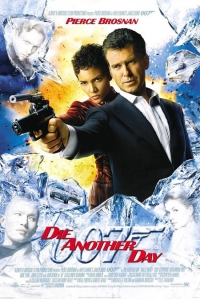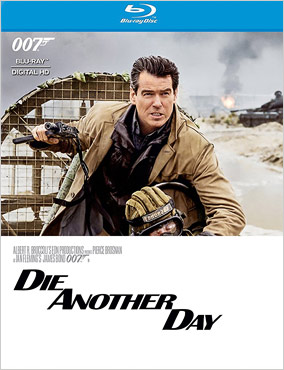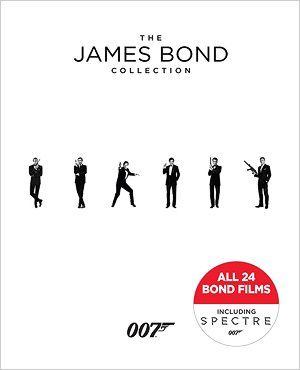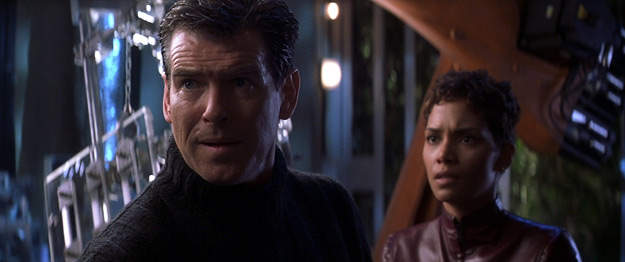
Coate: In what way was Halle Berry’s Jinx a memorable Bond Girl?
Bulk: Casting Halle Berry in the role of Jinx Johnson (“Jinx Jordan” on the soundtrack album!) was a big deal because she was already an established movie star and then in the middle of production she won an Oscar for Best Actress further adding to her cachet. The Bond series never had an actress of her caliber in the female leading role.
As a character, she was meant to be the female equivalent of Bond, something that the media always plays up as a big deal, but has been happening pretty regularly in the series since 1977’s The Spy Who Loved Me. I found Michelle Yeoh’s character of Wai-Lin in Tomorrow Never Dies more successful and interesting than Jinx, who doesn’t get to do much in this movie. Bond winds up having to save her quite a few times, so I’m not sure how effective the character is. Her memorable moments are based more on her physical attributes than for anything her character has to do in the movie.
Caplen: Die Another Day celebrated forty years of James Bond films, and the movie incorporates many tributes to Bond’s earlier missions. The character of Jinx is no exception. She is, in essence, an amalgam of previous Bond Girls over the years.
The obvious correlation is to Honey Ryder (Dr. No). After all, Jinx is introduced to audiences in the same way as her 1962 counterpart: Bond (this time using binoculars) accidentally discovers Jinx emerging from the ocean in an Ursula Andress-styled bikini replete with a knife affixed to her waist.
Jinx, however, is not hunting for seashells. Instead, like Dr. Holly Goodhead (Moonraker), Jinx is employed by an American intelligence agency (Jinx with the NSA) and is on her own mission to extract information from Zao. She and Bond cross paths as they pursue the same target (Moonraker). After spending the night with Bond, Jinx borrows from Teresa di Vicenzo’s playbook and leaves him sleeping alone (On Her Majesty’s Secret Service).
And that is when things go south for Jinx. Like Honey Ryder, Jinx repeatedly finds herself in similar predicaments that require Bond to rescue her, first from a laser that is about to slice off her head (Goldfinger) and then from drowning as the structures around her collapse (Dr. No, The Spy Who Loved Me). Fortunately, Jinx can pilot a plane (like Pussy Galore and Dr. Holly Godhead), but she is forced to survive her own “cat fight” against Miranda Frost (like the gypsy scene in From Russia with Love) before striking a fatal blow to her adversary (like Domino Derval in Thunderball).
Jinx is therefore the perfect Bond Girl to inaugurate the “Revisionist Bond Girl Era.” Her character is built entirely upon the strengths and weaknesses of many of her predecessors. As such, Jinx is memorable for what she represents.
Cork: Jinx is beautiful and fine, although I felt terribly underdeveloped in the film. Purvis and Wade wrote a spin-off script for her that delves much deeper into her character. It didn’t get made, alas.
But I want to talk about Miranda Frost. She steals this movie. Rosamund Pike rises above the snarls, barking and gnashing of teeth that dominates too much of the acting in this film. She imbues her character with just the right elements, and my only knock on her is that I wish she’d been in much, much more of the film. None of that is to diminish Halle Berry’s talents. I just never felt like Jinx had anywhere to go. If they made a Miranda Frost film, I’d be first in line to see it. I mean, she could have survived, right?
Funnell: Jinx Johnson is memorable for her introduction. She is spied by Bond emerging from the sea in a bikini and this scene is an homage to introduction of quintessential Bond Girl Honey Ryder in Dr. No. Die Another Day marks the 40th anniversary of the James Bond series and the action-oriented nature of Johnson highlights the increasing physical empowerment and narrative importance of women in the franchise and especially in the Brosnan era. Although Berry is the first women of color to play the central Bond Girl in a James Bond film, her characterization is not without problems. She is oversexed in ways that white Bond Girls (like Honey Ryder) are not and her depiction arguably taps into cinematic/cultural stereotypes for black women (see the essays by Travis Wagner and Charles Burnetts in For His Eyes Only: The Women of James Bond [2015]).
Pfeiffer: If memory serves me Halle Berry was the first woman of color to become Bond’s lover since Grace Jones in A View to a Kill in 1985. The lady who broke the glass ceiling in this regard was Gloria Hendry in Live and Let Die in 1973. The producers had to be very happy they cast Berry because before the movie was released, she won the Best Actress Oscar for Monster’s Ball — and it never hurts to have an Oscar winner associated with a Bond movie. Berry certainly fit the bill not only in terms of acting ability but also for the memorable scene in which she comes out of the surf in a bikini, one of several intended homages to previous Bond movies, in this case Ursula Andress in Dr. No. The pity is that the role of Jinx as a street savvy, wise-cracking heroine seemed out of place in a Bond movie. There were plans to give her a series of her own but MGM never carried through with them.
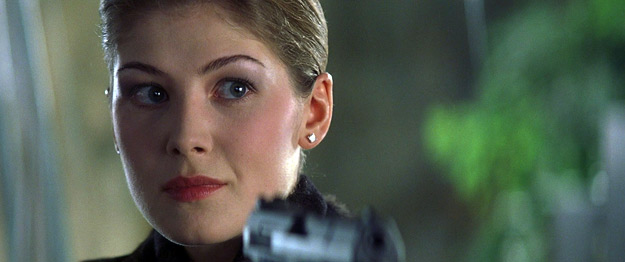
Coate: Where do you think Die Another Day ranks among the James Bond movie series?
Bulk: I tend not to rank the Bond films. I’m not even sure which one is my favorite. I tend to prefer the more grounded Bond films, like Goldfinger, On Her Majesty’s Secret Service, Licence to Kill and 2006’s Casino Royale. Die Another Day isn’t my favorite, but if one of the local theaters here in L.A. plays it, I’ll probably be the first person to buy a ticket to see it.
Caplen: Die Another Day is darker than its Pierce Brosnan predecessors. While Emilio Largo intimates in Thunderball that he will torture Domino by the strategic, scientific application of heat and cold, we never see him victimize her on film. But the title sequence of Die Another Day allows us to witness, in graphic detail, the extent to which Bond is subjected to these acts, which are accompanied by the venomous stings of scorpions.
I think that Die Another Day is the weakest of the Brosnan films. Compared to other actors’ finales as Bond, Die Another Day does not outshine Diamonds Are Forever, Licence to Kill, or even A View to a Kill. While Die Another Day may present greater excitement and pace than A View to a Kill, I am of the view that the strength of Casino Royale has impacted Die Another Day to a greater degree than The Living Daylights has affected A View to a Kill. While some may affirmatively desire to forget A View to a Kill, Die Another Day is easily susceptible to being simply forgotten.
Cork: Twenty-third out of twenty-six (including the ’67 Casino Royale and Never Say Never Again).
Funnell: It is not in my top 10. It is not the worst Bond film but certainly not the best.
Pfeiffer: I’d lump Die Another Day above only The Man with the Golden Gun. The special effects were disappointing and the film became more absurd as it went along. It was clogged with too many villains and a plot line that meandered. I can’t speak for anyone else, but I suspect no one was very satisfied with the end result. I always thought it was a pity that Brosnan’s reign as Bond had to end on a down note.
Coate: What is the legacy of Die Another Day?
Bulk: The current Bond films are a direct result of Die Another Day. The series tends to reset itself after getting a little outlandish. You Only Live Twice, which involves rockets being stolen in space to escalate World War III, was followed by the down to Earth On Her Majesty’s Secret Service. Moonraker, a film that literally sends Bond into outer space, was followed by the more grounded spy thriller, For Your Eyes Only. And Die Another Day, which involves the villain using a space-based weapon ultimately controlled by a robot suit, was followed up with Casino Royale, a more realistic take on Bond and that’s the path the series has been on ever since, although SPECTRE was a little out there. Maybe the next one will take a back to basics approach. I can’t wait to find out!
Caplen: Die Another Day seemed to conclude the Pierce Brosnan era with a question mark, rather than an exclamation point. After completing his final mission, Brosnan quipped that the franchise was “on [its] last legs, and it was not until 2006 that Daniel Craig’s Casino Royale reached theaters. Die Another Day ultimately marked a significant turning point for the franchise, which has taken a more serious tone and accentuates Bond’s relationships (particularly with Dame Judi Dench’s M). It is likely that such an introspective reexamination was not possible with Brosnan, who brought to the role a boyish playfulness that, itself, was a stark departure from Timothy Dalton’s approach.
Cork: The legacy is a completely new direction for 007. Eon walked down that road and found it wasn’t the kind of film they wanted to be making. With the end of the McClory/Sony lawsuits in 2000, Eon could tackle Casino Royale, and they wanted to do that in the right way. That meant jettisoning Brosnan, casting Craig, and rebuilding 007 from the pages of Ian Fleming’s first Bond novel. It was an important step. Die Another Day made good money, delivered on spectacle, but didn’t resonate.
What is interesting to me is that although Die Another Day and Casino Royale are so different, many of the seeds of Casino were sewn in Die Another Day. Michael Wilson had long been interested in the funding of conflict in places like Afghanistan, Bosnia and Africa, and both DAD and Casino begin with scenes dealing with the funding of distant conflicts and illicit arms trade. Brosnan, whom I think is a fine actor, delivers a grouchy, angry performance as Bond that presages the tone written for Craig (who pulls this off brilliantly). When Purvis and Wade worked on the Jinx stand-alone script, they explored her origin story, which helped them look for ways to explore Bond’s origins in Casino Royale. Both films feature Bond’s heart stopping, villains who are well-known, but whose origins are a mystery to British Intelligence. Both films feature major sequences in collapsing buildings that are sinking into water that end with the “drowning” of the lead female character. So there is lots of weird overlap.
Because of all the work I was doing on Bond-related projects at the time, Die Another Day represents a fantastic time in my life. I just wish I liked the movie a bit better.
Funnell: Die Another Day is a turning point for the Bond film franchise. The film contains a notable amount of (obvious) CGI and draws into question if audiences will accept James Bond as a digital hero. James Bond is known for getting out of tricky situations and performing some pretty amazing feats but what happens when the action physically impossible/improbable? Die Another Day pushes Bond to the digital limit (if not over it) and created a turning point in the series as the following films feature the more gritty and physically grounded physical performances of Daniel Craig.
Pfeiffer: The legacy of the film is an important one. As I said previously, I don’t think too many people involved with the movie were enthused with the final cut. That inspired producers Barbara Broccoli and Michael G. Wilson to make drastic changes to the franchise, which was in danger of getting stale. Michael had long wanted to shake up the Bond formula by reinventing the films and making them more believable by bringing back the elements of Ian Fleming’s novels. They took a huge gamble on doing so by hiring Daniel Craig and launching the first “real” film version of Casino Royale (assuming one discounts the fun but zany 1967 spoof version). The gamble paid off handsomely and the rest is history. The Bond franchise has been reinvigorated for a new generation. So in that respect, Die Another Day’s legacy is that it paved the way for far superior films.
Coate: Thank you — Neil, Robert, John, Lisa, and Lee — for participating and sharing your thoughts about Die Another Day on the occasion of its 15th anniversary. The James Bond historian roundtable discussion will return in Remembering “Tomorrow Never Dies” on its 20th Anniversary.
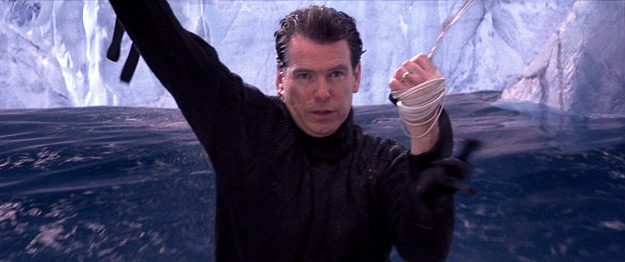
IMAGES
Selected images copyright/courtesy 20th Century Fox Home Entertainment, Eon Productions Limited, Danjaq LLC, MGM Home Entertainment, United Artists Corporation.
- Michael Coate
Michael Coate can be reached via e-mail through this link. (You can also follow Michael on social media at these links: Twitter and Facebook)


